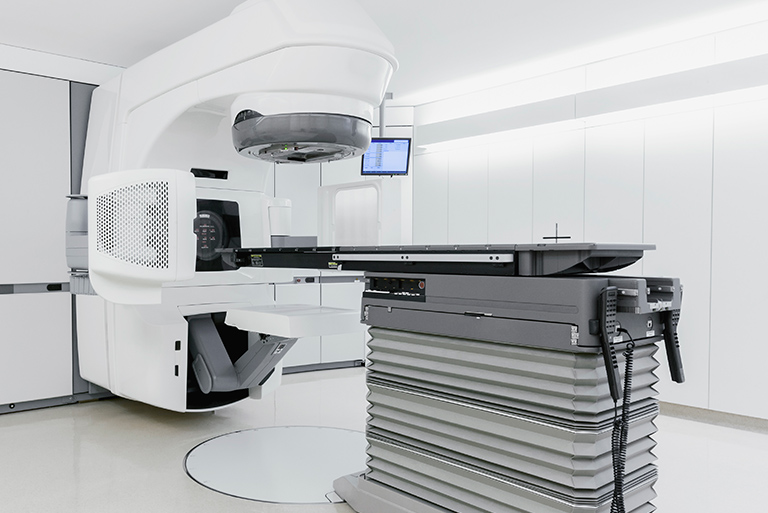
How Does Radiation Affect Fertility?
Patients should know that radiation therapy uses high-energy x-rays, gamma rays, and/or charged particles to damage the DNA of cancer cells. When this occurs, the cancer cells can no longer divide and spread. Many of them die.
While radiation targets cancer cells, it is inevitable that some healthy cells are damaged in the process. Depending on the treatment area, this can include egg and sperm cells. Reproductive organs and glands that produce related hormones can also be damaged.
Here are some examples of ways radiation can affect fertility:
- Radiation to a man’s pelvis, abdomen, or lower spine can damage his testes, interfering with his ability to produce sperm. It may also lower his sperm count, damage sperm integrity, or impair the normal transport of sperm.
- Similarly, radiation to a woman’s pelvis or abdomen can affect any of the reproductive organs within the radiation field. Radiation to the ovaries themselves can destroy eggs, disrupt egg production and diminish egg quality.
- In addition, women who have radiation to the uterus or cervix may have difficulty becoming pregnant or carrying a pregnancy to term. They are also at higher risk for miscarriage, preterm labor, and having low birth weight babies.
- Total body irradiation (TBI), used for stem cell and bone marrow transplants, involves radiation to the entire body. Due to the extensive nature of the treatment, most men who undergo TBI typically have azoospermia (no sperm) afterward. Most women who have this treatment experience ovarian failure.
- Radiation in other parts of the body, such as the brain (particularly the pituitary gland), can interfere with hormonal processes needed for fertility.
Factors Influencing Risk
Location
Radiation is directed at a particular area of the body, where there are cancer cells. This targeted treatment area, along with surrounding tissues, are subject to the most damage from radiation. Therefore, reproductive functioning is impacted only by radiation to or near organs that are part of the reproductive system (as described above). Radiation to other parts of the body, such as the extremities or the upper chest, should not affect fertility.
Dose and Duration
Typically, the higher the dose of radiation, the greater the likelihood of damage.
Resources
- American Cancer Society;“Understanding Radiation Therapy”;(Last revised: May 2, 2014);http://www.cancer.org/treatment/treatmentsandsideeffects/treatmenttypes/radiation/understandingradiationtherapyaguideforpatientsandfamilies/index
- American Society of Clinical Oncology (ASCO);“Fertility Concerns and Preservation for Men”;(Reviewed and approved: March 2014); http://www.cancer.net/coping-and-emotions/sexual-and-reproductive-health/fertility-concerns-and-preservation-men
- American Society of Clinical Oncology (ASCO);“Fertility Concerns and Preservation for Women”;(Reviewed and approved: March 2014); http://www.cancer.net/coping-and-emotions/sexual-and-reproductive-health/fertility-concerns-and-preservation-women
- National Cancer Institute;“Radiation Therapy for Cancer”;(Reviewed: June 30, 2010);http://www.cancer.gov/cancertopics/factsheet/Therapy/radiation
- OncoLink (Penn Medicine);Vachani, Carolyn, RN, MSN, AOCN;“Female Fertility and Cancer Treatment”;(Last modified: October 6, 2006); http://www.oncolink.org/coping/article.cfm?c=534&id=990
- OncoLink (Penn Medicine);Vachani, Carolyn, RN, MSN, AOCN;“Male Fertility and Cancer Treatment”;(Last modified: October 6, 2006); http://www.oncolink.org/coping/article.cfm?id=992&aid=1496